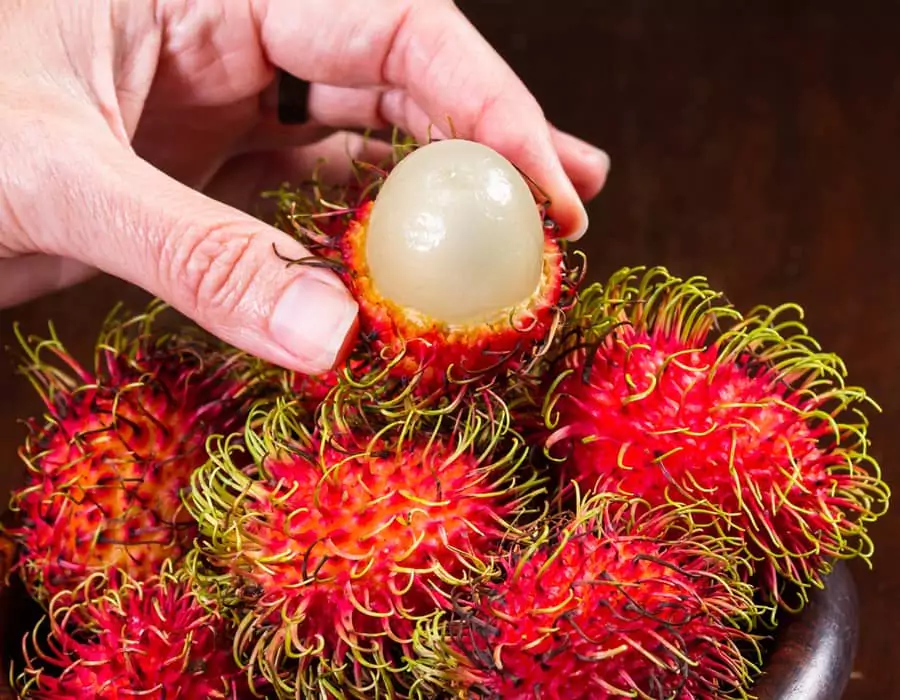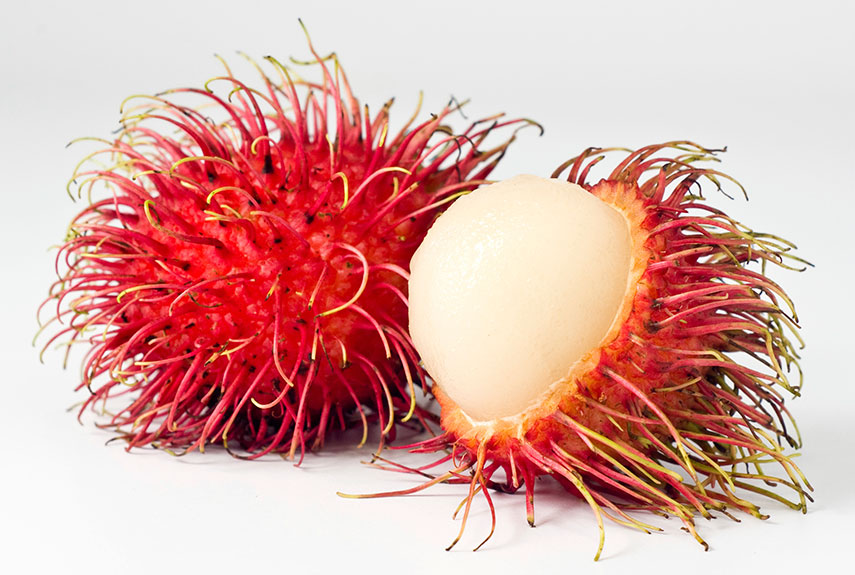







Rambutan Health Benefits Especially for Diabetics!


Table of Contents
Rambutan: Why is It A Good Fruit To Eat For Diabetics?
Hello everyone, today I am talking about Rambutan. Rambutan is a fall fruit we will talk about all the health benefits of rambutan especially for those who have diabetes! We will talk about
- Rambutan in general
- Health Benefits especially for diabetics or insulin-resistant patients
- How Rambutan can help with weight loss
- How Rambutan can help with fighting infections
- Potential risks of Rambutan
I am an endocrinologist who specializes in hormones and diabetes management. I practice in Florida but help people with diabetes all over the world via SugarMD youtube channel. Rambutan grows in a tree that can reach up to 75 feet (26 meters) in height. It grows in tropical climates, such as in the Philippines, Malaysia, and Indonesia.
You do not have to live in the Philippines to taste these super tasty fruits. I actually made this video after buying it at the Costco store in West Palm Beach. So, yes, go get them! Wait.. After this video I meant. For those history nerds here are a few lines for you: Around the 14th century, the Arab traders introduced rambutan to East Africa.
And in the 19th century, the Dutch introduced this fruit to South America. In 1912, the fruit traveled from Indonesia to the Philippines. Rambutan is super nutritious. It also offers lots of health benefits ranging from weight loss and better digestion to increased resistance to infections.
Carbs in Rambutan
A hundred grams of rambutan which is around 11 rambutans contain about 84 calories and 20 gr of carbs only.
What Does Rambutan look like?

What Does Rambutan look like?
Rambutan is a golf-ball-sized fruit that has a hairy red and green shell. Well, it is kind of intimidating because it looks like a sea urchin It has translucent white flesh has a sweet yet creamy taste and contains a seed in its middle.
Here are some of the main health benefits of rambutan:
First of all, it has much fiber as what you would find in the same quantity of apples, oranges or pears which is very good! If you watched our other videos about those fruits you would already know. When you have a lot of fiber in your diet you will not have constipation easily and lower cholesterol as well as the risk of colon cancer.
It even has soluble fiber which provides food for your beneficial gut bacteria. As a result, these good bacteria produce short-chain fatty acids. The same fatty acids are essential nutrition for the cells of your gut.
These short-chain fatty acids can also reduce inflammation and improve symptoms of intestinal diseases, including irritable bowel syndrome (IBS), Crohn’s disease, and ulcerative colitis. Rambutan also is rich in vitamin C which is an important antioxidant, protecting your body’s cells against damage and infections.
Eating 5 rambutan fruit will meet 50% of your daily vitamin C needs. It also has a good amount of copper that helps proper growth (not cancerous growth) and maintenance of various cells, including those of your bones, brain, and heart. Rambutans are rich in vitamin B5 as well. B5 plays an important role in helping your body convert food into energy.
Vitamin B5 is only available through food, and cannot be produced by your body, therefore, it’s important to consume B5 vitamins every day. Rambutan offers small amounts of manganese, phosphorus, potassium, magnesium, iron, and zinc as well.
How does It Help with Weight Loss?
In addition to its high insoluble fiber content that keeps you full, the soluble fiber in rambutan can dissolve in water and form a gel-like substance in your gut that helps slow down digestion. It can also lead to reduced appetite.
Rambutan May Help Fight Infections
In addition to a bunch of vitamin C, you are getting from rambutan which you all know by now from my vitamin C video that helps lower the risk of infections but in addition to those studies show that it contains compounds that may protect your body against viruses and bacterial infections.
What are Other Less Known Benefits of Rambutan?
May reduce cancer risk: Animal studies found that compounds in rambutan may possibly help prevent the growth of cancer cells May protect against heart disease: One animal study showed rambutan reduced total cholesterol and triglyceride levels in diabetic mice.
As you may know from my cholesterol videos how triglycerides can be related to heart disease. May protect against diabetes: Yes rambutan may even increase insulin sensitivity and reduce fasting blood sugar levels and insulin resistance.
Potential Risks
The flesh of the fruit is considered safe for human consumption. On the other hand, its peel and seed are inedible. Animal studies report that the peel may be toxic when eaten regularly and in very large amounts.
Especially when consumed raw, the seed appears to have narcotic and analgesic effects, which may cause symptoms like sleepiness, coma, and even death. Although I m not sure if eating 1-2 seed would kill anyone.
Personally, I would not try eat seeds. I hope this video was helpful and if it was please remember to like, share and subscribe. Remember to watch hundreds of other diabetes or insulin resistance related videos to learn more. AHMET ERGIN, MD, FACE, CDCES, ECNU ENDOCRINOLOGIST
Written By Dr. Ahmet Ergin
459 total articles
Meet Dr. Ahmet Ergin, a highly skilled and dedicated endocrinologist with a passion for diabetes care. Dr. Ergin earned his medical degree with honors from Marmara University in Istanbul. He completed internal medicine residency and endocrinology fellowship at Cleveland Clinic. Dr. Ergin is board-certified in Internal Medicine, Endocrinology, Diabetes, and Metabolism due to his vast medical expertise. He's a certified diabetes educator, author of “The Ultimate Diabetes Book,” and founder of “the SugarMD YouTube channel.” Dr. Ergin offers exceptional diabetes care to his patients in Port Saint Lucie, FL, helping them manage effectively. For a closer look into his insights and experiences, connect with Dr. Ahmet Ergin on LinkedIn, Instagram, and YouTube.”
Disclaimer: These statements have not been evaluated by the Food and Drug Administration. Information on this website isn't intended to treat, cure or prevent any disease. Discuss with your doctor and do not self-treat.
Products









